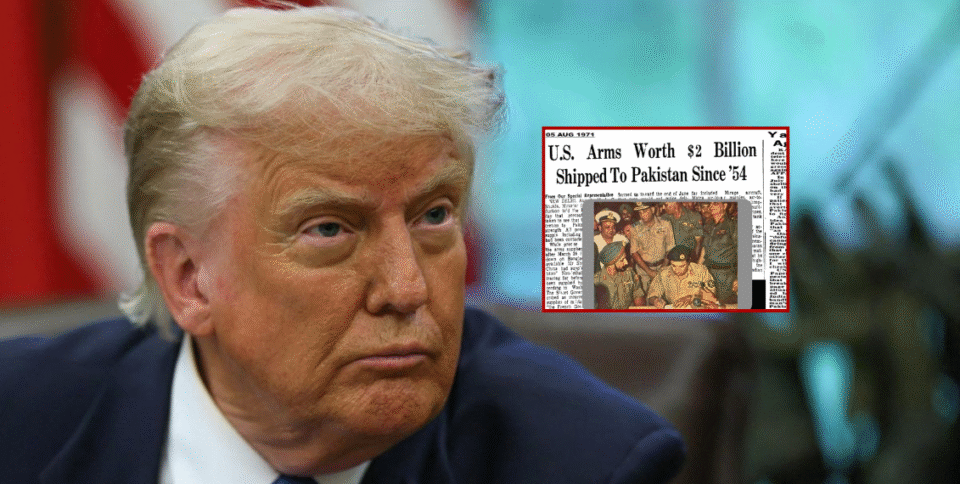New Delhi, August 5: The Indian Army has spotlighted a long-forgotten chapter in Indo-US relations by sharing a decades-old newspaper clipping that details how the United States supplied over $2 billion worth of arms to Pakistan in the lead-up to the 1971 India-Pakistan war.
This throwback comes a day after former US President Donald Trump threatened to raise tariffs on Indian goods over India’s continued oil trade with Russia.
The Eastern Command of the Indian Army posted the archival news clipping on X (formerly Twitter) as part of its “This Day That Year” series on August 5. Using the hashtag #KnowFacts, the post highlighted the military build-up prior to the 1971 war and drew attention to Washington’s direct involvement in arming Pakistan over a 17-year period.
The news clipping dated August 5, 1971, cites then Defence Production Minister V.C. Shukla informing the Rajya Sabha that the United States had supplied Pakistan with missiles, tanks, submarines, artillery, and fighter aircraft between 1954 and 1971—many at “throw-away prices”. This was despite the Pakistani military crackdown in East Pakistan (now Bangladesh) in March 1971.
“Mr. V.C. Shukla said precautions had been taken to ensure there was no further increase in Pakistan’s military strength. All possible sources of supply, including NATO powers, had been contacted,” the report read. Shukla also noted that China had sent Pakistan large quantities of non-lethal items post-crackdown, and that arms contracts signed before March 25, 1971, were still being honored by the US.
The historical post has triggered conversations online about geopolitical double standards and long-standing foreign policy biases. The Army’s post appears to subtly reference current tensions between India and the US following Trump’s strong comments against India’s Russian oil imports.
On August 4, Trump posted on his social media platform Truth Social, accusing India of buying “massive amounts of Russian oil” and reselling it for profit. He claimed India was ignoring the war in Ukraine and profiting from the conflict. “Because of this,” he wrote, “I will be substantially raising the tariff paid by India to the USA.”
Trump’s threat has been widely criticized in Indian policy circles, especially given his previous tenure’s focus on strengthening India-US ties under the Indo-Pacific strategy.
In response, India’s Ministry of External Affairs (MEA) issued a sharp rebuttal on Monday. It emphasized that India’s energy purchases from Russia are driven by national interest, and that energy security remains a non-negotiable priority for the country. The MEA called the criticism “unjustified and unreasonable,” asserting India’s sovereign right to determine its trade policy.
“India will take necessary measures to safeguard its national interests and economic security,” the statement read.
India has consistently defended its position on oil imports from Russia, stating that its priority is to ensure affordable and predictable energy supplies for its population amid global uncertainty. Officials have also pointed out that many other countries continue to engage in trade with Russia despite voicing criticism publicly.
The resurfacing of the 1971 arms deal narrative may not be a coincidence. It sends a clear message that India has not forgotten historical actions by Western powers that shaped South Asian geopolitics, particularly the role of the US in enabling Pakistan’s military capabilities before the Bangladesh Liberation War.
As the Trump tariff warning makes headlines, the Indian Army’s reminder of past US actions seems timed to offer strategic context to current policy debates—highlighting that long-term memory and strategic clarity guide India’s current decisions, not short-term political pressure.

